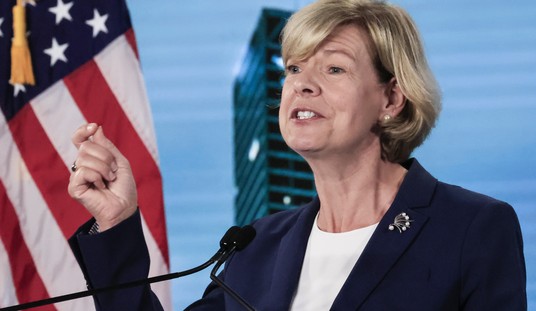The proof of the failure of solar power isn’t in the Solyndra bankruptcy, but in potential BKs by industry leaders like First Solar (FSLR), the largest solar company in the world.
Since May of 2008, when First Solar reached its all-time high of $311, the company has lost 90 percent of its value, falling to $31-$33. The company has been selling assets tied to government loans, insiders have been cashing out the stock and the number of short-sellers- those investors who are betting the stock will go down- now amounts to about 43 percent of the shares in public hands as of December 15, 2011. In the meantime CEO Robert Gillette exited stage right, with $30 million thank you from the company in October of 2011.
But he didn’t leave before First Solar received federal loan guarantees and other consideration to the tune of $3.5 billion.
Today, FSLR stock is worth about $3 billion in market capitalization even after federal, state and local largesse.

First Solar Stock Chart by YCharts
Thank you Robert Gillette. Between 2008 and 2011 Gillette and First Solar spent a little over $2 million on various lobbying activities along with $300,000 to various “green-friendly” candidates. That’s investment that Democrats at least can believe in.
The market however isn’t as gullible.
When Obama was elected in the fall of 2008 several publications reached out to me to write about investments that would be “hot” and those that would be “not” with the new administration. The suggestion was that solar and other green technologies would be places that would be “hot.”
Recommended
It was tempting at the time to put solar and other green technologies into the “hot” column because everyone knew that the Democrats were going to throw money at the “green” job industry.
In fact, the Western states of Colorado, Arizona, New Mexico and Nevada- largely controlled by Democrats- were already throwing money at solar companies touting the jobs that would be created in the green energy field.
However, basing an investment philosophy on government intervention makes about as much sense as basing it on non-monetary gains like, oh, I don’t know, lowering carbon emissions.
Sounds great in theory, but return on investment isn’t a theory; it’s a prerequisite to successful investing.
Here’s what I wrote at the time for Hard Asset Investor:
Without these state mandates, solar power might still remain an interesting, but uneconomical alternative to all but the most dedicated environmentalists.
That's because the price per kilowatt hour for solar power electrical generation at the largest scale still hovers around $.21 per kilowatt hour, according to the website Solarbuzz.com. Old-fashioned coal-fired electrical generation only cost an average of $.0821 to $.1648 per kilowatt hour in 2007 depending on region, according to figures compiled by the Energy Information Administration. And competing alternative energy sources - like wind energy - are lower cost in most regions than solar, too. Solar's costs have to still come down substantially for a long-term boom to take hold.
But three years later, the economics of green energy make as little sense as they did back then even with generous government subsidies. Gone are many of the Democrat-controlled governments at the state level that championed green energy and the job creation benefits they were supposed to confer. They’ve been replaced by gaping state budget deficits that have little sympathy for green energy theory and a lot of room for common sense.
The big breakthroughs in cost-savings that have been predicted for solar haven’t come- solar still costs over $.20 per kilowatt hour, although devotees are still making brave promises of future cost savings. And while many blame oversupply in solar panels for the troubles plaguing the industry, oversupply generally isn’t a problem with industries that have actual demand.
In a piece by the National Legal and Policy Center (NLPC), it was revealed that First Solar recently laid off half of its workforce at the Antelope Valley solar project. According to the NLPC, the company made a round of additional layoffs in December, trimming research and development staff.
That’s because the sales arrow is pointing in the wrong direction. Sales estimates have plunged from around $3.5 billion for 2012 to $2.8 billion and could deteriorate further. Earnings estimates have plunged as well.
In the past trailing twelve months the company has chewed through close to three-quarters of a billion dollars in levered cash-flow. Just three months ago analysts thought the company would generate earnings per share of around $10.48 according to estimates provided by Yahoo Finance. After revisions, earnings have been slashed to a consensus estimate of $4.19 for 2012.
“’I’m a little shocked’ by the cuts to forecasted per-share earnings, said Mark Bachman, an analyst at Avian Securities LLC in Boston who has a ‘positive’ rating on First Solar,’” according to Bloomberg.com. “’They severely handicapped next year’s numbers.’”
For the solar industry as a whole it’s looking less and less like a handicap and more like a terminal disease.
And if First Solar can’t make it after all the subsidized loans, state incentives, money spent on lobbying and political donations, then someone ought to ask for their money back.
Taxpayers ought to be first in line for a refund.
























Join the conversation as a VIP Member